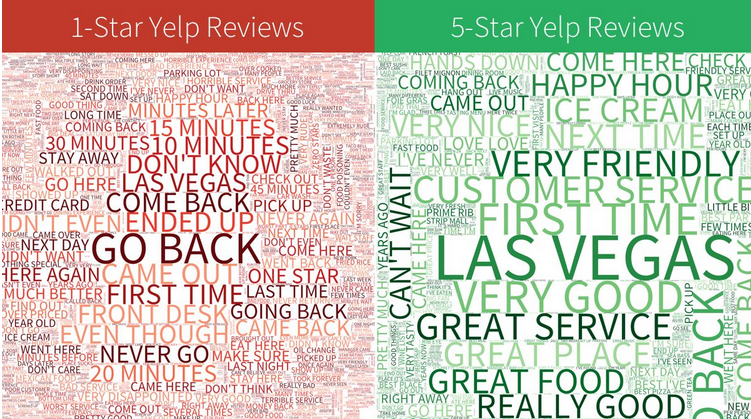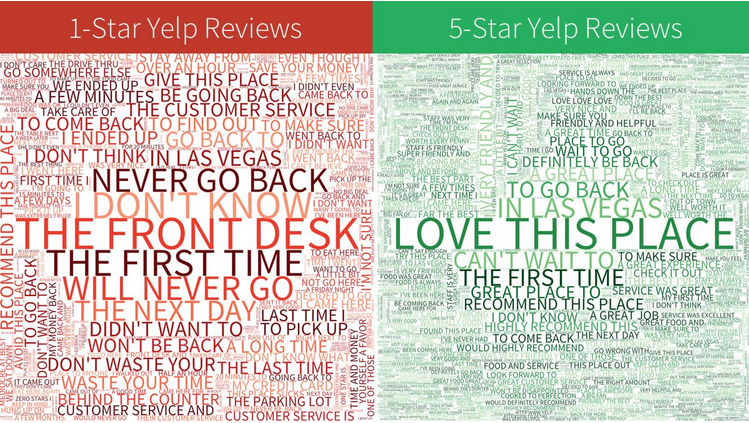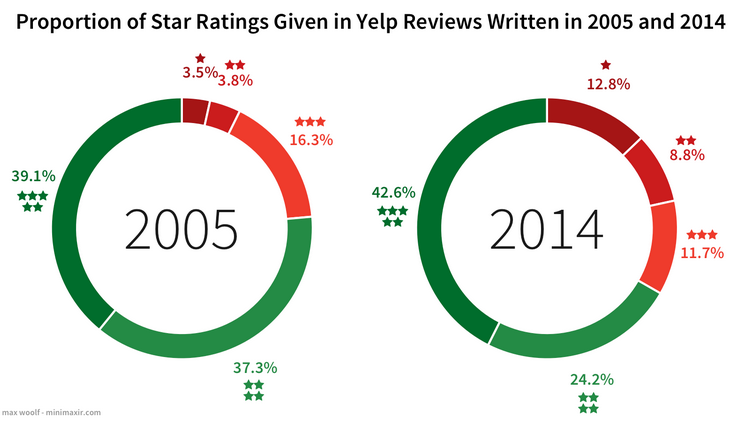Many of you may already know the obvious: 1-star reviews on Yelp indicate a poor business while 5-star reviews on Yelp indicate a favorable business. But what is the actual statistical difference between the two? What kind of story does the data tell? Read further to find out!
Typically, when people write reviews, they are based on their personal experience with that business rather than objective, measurable attributes of the business.
That being said, not all parts of a negative review are negative, while not all parts of a positive review are positive. What do I mean by this? Well, people can leave a 1-star rating while still praising the food or service. Alternatively, someone may give a 5-star overall rating but still have something negative to say about their server or something as simple as the decor.
Max Woolf, a Software QA Engineer based out of the Bay Area, analyzed the language present in 1,125,458 Yelp Reviews in Phoenix, Las Vegas, Madison, Waterloo, and Edinburg. See his findings below:
A comparison of the most common two-word phrases between 1-star and 5-star reviews:
A comparison of the most common 3-word phrases between 1-star and 5-star reviews:
As you can probably tell, the 3-word phrase comparison paints a better picture of what each of the reviewers experienced. The larger the word is in the image, the more frequently it occurred in the reviews that were analyzed. You’ll notice that “Las Vegas” is featured quite prominently in both 1-star and 5-star reviews for the most common 2-word phrases. This is because this was one of the cities from which the data was collected from. We have a word cloud of reviews similar to these available in the ReviewInc platform.
So now the question becomes: can language be used to predict reviews? According to Woolf, yes! Running a few word comparisons using the lexicons compiled by UIC professor Bing Liu, Woolf was able to determine that language has a strong statistical effect on review ratings. And due to the large sample size, these findings are fairly significant, statistically-speaking.
According to ReviewInc COO Henri Isenberg, “I think in 2005 [when Yelp first started], people weren’t yet comfortable with blasting others on the internet which is why it was skewed to the positive. Now everyone feels comfortable and they even have consumer protection in California.” But present-day Yelp (from 2010 onward) has a pretty even distribution of both 1-star and 5-star reviews which has grown steadily over time.
Overall, negative reviews had a higher percentage of ‘negative’ words associated with them, while positive reviews had a higher percentage of ‘positive’ words associated with them. Seems like common sense, right?
Well, not when you take into account that some reviews can often be fairly balanced, regardless of their star-rating. So what can business owners stand to gain from this knowledge? Encourage feedback from all your customers, not just the people you feel had a positive experience.
The average person will be able to read between the lines more often than not when it comes to reading online reviews and determining which ones seem the most authentic and genuine. Don’t know where to start? Give us a call at 877.973.8439 today!
View full data sets here.











